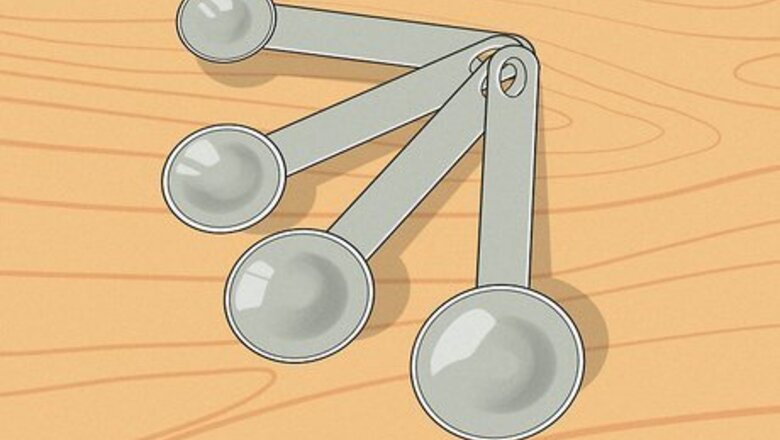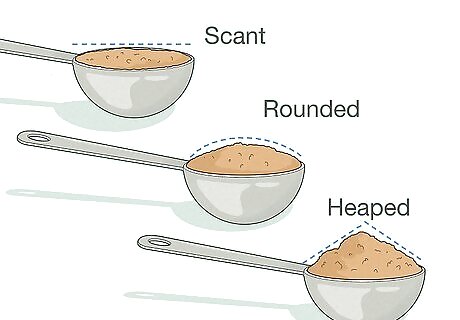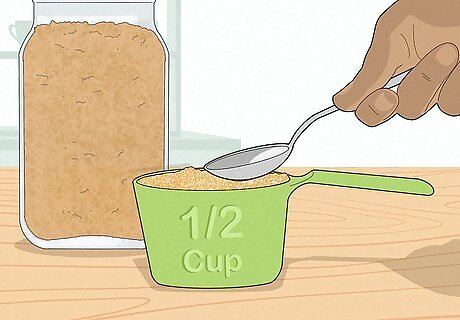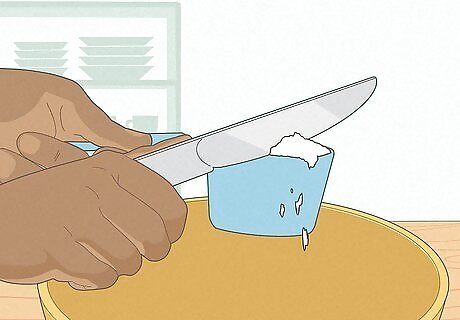
views
- 16 tablespoons is equal to 1 cup.
- 1 small spoon (like the kind used to stir coffee or tea) is equal to 1 teaspoon.
- 1 large spoon (like the kind used for cereal) is equal to 1 tablespoon.
Measuring with Spoons

Understand the different abbreviations for tablespoons and teaspoons. Many recipes abbreviate measurements to make the text quicker and easier to read. However, if you’re not used to the abbreviations, they can be confusing. If you don’t know understand a measurement, use the information below or search online for the meaning of the abbreviation. Tbsp / T = tablespoon Tsp / t = teaspoon

Distinguish between a heaped, rounded, and scant spoon. Pile as many dry goods as you can on the spoon to achieve a heaped spoon. Create a rounded hump on top of the spoon to achieve a rounded spoon. Fill the spoon just below the brim to make a scant spoon. These measurements are generally used for dry goods. Liquid measurements are always a level spoon.

Use a combination of spoons if necessary. Most measuring spoons sets will come with ¼ tsp, ½ tsp, ¾ tsp, 1 tsp, and 1 tbsp. So, for instance, if a recipe asks for 1 1/2 teaspoons, measure 1 teaspoon into the bowl and then add 1/2 teaspoon.
Using Cups

Use dry cups for dry goods and wet cups for measuring liquids. Dry measuring cups are designed to be filled to the top of the cup, whereas wet cups have a measuring line below the brim of the cup. This helps to prevent the liquids from spilling over the edge of the cup when they are transferred to the bowl. Fill each type of cup to their unique measuring line. Check the bottom of the measuring cup for a label if you are unsure if you have a wet or dry measuring cup. Place the cup on a flat surface when measuring liquids to ensure an accurate measurement. If you are using a jug with cup lines, use this for both wet and dry ingredients. Pour the liquid so that the bottom of the meniscus is at the measuring line. Cups are often abbreviated as "C" and most measuring cup sets will contain ¼ C, ⅓ C, ½ C, and 1 C. Note that a US cup is 240 mL, whereas a UK cup is 250 mL. If your recipe is written in America, assume that it is a US cup. It is safe to presume that recipes written in Europe and the rest of the world use UK cup measurements.

Push the ingredients down if the recipe requires a packed cup. Use the back of a spoon to push the dry goods down into the cup. Add more dry goods into the cup and press them down once again. Continue to repeat this process until the cup can’t hold any more dry goods. This measurement is often used for brown sugar. If the recipe doesn’t say that the cup should be packed, do not tap, press, or shake dry goods.

Achieve a level or regular cup by scraping a knife over the top of the cup. If the recipe asks for a regular cup or a level cup, this indicates that you need to sweep off any dry goods that sit above the cup. Hold the cup over the bag of dry goods, so that any excess falls back into the bag.

















Comments
0 comment